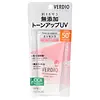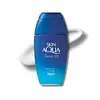What's inside
What's inside
 Key Ingredients
Key Ingredients

 Benefits
Benefits

 Concerns
Concerns

 Ingredients Side-by-side
Ingredients Side-by-side

Water
Skin ConditioningCyclopentasiloxane
EmollientZinc Oxide
Cosmetic ColorantEthylhexyl Methoxycinnamate
UV AbsorberButylene Glycol
HumectantTitanium Dioxide
Cosmetic ColorantDimethicone
EmollientPEG-10 Dimethicone
Skin ConditioningTriethoxycaprylylsilane
Diethylamino Hydroxybenzoyl Hexyl Benzoate
UV FilterPEG-9 Polydimethylsiloxyethyl Dimethicone
EmulsifyingPhenyl Methicone
EmollientSolanum Lycopersicum Seed Extract
Skin ConditioningOcimum Basilicum Flower/Leaf Extract
TonicRosa Alba Leaf/Stem Extract
HumectantOak Root Extract
Skin ConditioningAbies Alba Seed Extract
AntimicrobialMica
Cosmetic ColorantCI 77492
Cosmetic ColorantTin Oxide
AbrasivePEG-10 Dimethicone Crosspolymer
StabilisingPolyglyceryl-6 Oleate
EmulsifyingDisteardimonium Hectorite
StabilisingZinc Chloride
AntimicrobialTalc
AbrasivePotassium Hydroxide
BufferingSodium Citrate
BufferingPolyglyceryl-2 Isostearate
EmulsifyingTocopheryl Acetate
AntioxidantSilica
AbrasiveHydrogen Dimethicone
Bis-Vinyldimethicone Crosspolymer
EmollientGlycerin
HumectantTriethoxysilylethyl Polydimethylsiloxyethyl Hexyl Dimethicone
Skin ConditioningCitric Acid
BufferingZinc Phosphate
Phenoxyethanol
PreservativeBHT
AntioxidantWater, Cyclopentasiloxane, Zinc Oxide, Ethylhexyl Methoxycinnamate, Butylene Glycol, Titanium Dioxide, Dimethicone, PEG-10 Dimethicone, Triethoxycaprylylsilane, Diethylamino Hydroxybenzoyl Hexyl Benzoate, PEG-9 Polydimethylsiloxyethyl Dimethicone, Phenyl Methicone, Solanum Lycopersicum Seed Extract, Ocimum Basilicum Flower/Leaf Extract, Rosa Alba Leaf/Stem Extract, Oak Root Extract, Abies Alba Seed Extract, Mica, CI 77492, Tin Oxide, PEG-10 Dimethicone Crosspolymer, Polyglyceryl-6 Oleate, Disteardimonium Hectorite, Zinc Chloride, Talc, Potassium Hydroxide, Sodium Citrate, Polyglyceryl-2 Isostearate, Tocopheryl Acetate, Silica, Hydrogen Dimethicone, Bis-Vinyldimethicone Crosspolymer, Glycerin, Triethoxysilylethyl Polydimethylsiloxyethyl Hexyl Dimethicone, Citric Acid, Zinc Phosphate, Phenoxyethanol, BHT
Water
Skin ConditioningEthylhexyl Methoxycinnamate
UV AbsorberButylene Glycol
HumectantIsononyl Isononanoate
EmollientDiethylamino Hydroxybenzoyl Hexyl Benzoate
UV FilterEthylhexyl Triazone
UV AbsorberBis-Ethylhexyloxyphenol Methoxyphenyl Triazine
Skin ConditioningSodium Hyaluronate
HumectantHydrolyzed Sodium Hyaluronate
Skin ConditioningHydroxypropyltrimonium Hyaluronate
Pentylene Glycol
Skin ConditioningDimethicone
EmollientPropanediol
SolventCaprylhydroxamic Acid
Silica
AbrasiveAcrylates/C10-30 Alkyl Acrylate Crosspolymer
Emulsion StabilisingPolyglyceryl-10 Pentaisostearate
EmollientTriethanolamine
BufferingBis-PEG-18 Methyl Ether Dimethyl Silane
EmollientDisodium EDTA
Xanthan Gum
EmulsifyingPhenoxyethanol
PreservativeWater, Ethylhexyl Methoxycinnamate, Butylene Glycol, Isononyl Isononanoate, Diethylamino Hydroxybenzoyl Hexyl Benzoate, Ethylhexyl Triazone, Bis-Ethylhexyloxyphenol Methoxyphenyl Triazine, Sodium Hyaluronate, Hydrolyzed Sodium Hyaluronate, Hydroxypropyltrimonium Hyaluronate, Pentylene Glycol, Dimethicone, Propanediol, Caprylhydroxamic Acid, Silica, Acrylates/C10-30 Alkyl Acrylate Crosspolymer, Polyglyceryl-10 Pentaisostearate, Triethanolamine, Bis-PEG-18 Methyl Ether Dimethyl Silane, Disodium EDTA, Xanthan Gum, Phenoxyethanol
Ingredients Explained
These ingredients are found in both products.
Ingredients higher up in an ingredient list are typically present in a larger amount.
Butylene Glycol (or BG) is used within cosmetic products for a few different reasons:
Overall, Butylene Glycol is a safe and well-rounded ingredient that works well with other ingredients.
Though this ingredient works well with most skin types, some people with sensitive skin may experience a reaction such as allergic rashes, closed comedones, or itchiness.
Learn more about Butylene GlycolDiethylamino Hydroxybenzoyl Hexyl Benzoate (DHHB) is a chemical UV-A absorber. It is formulated for high UVA protection (320-400 nm).
DHHB is well-liked for:
DHHB has been approved by the EU, Japan, Taiwan, and South America for use up to 10%. Unfortunately, it has not been approved for use in the US or Canada due to slow regulatory processes.
This ingredient is soluble in oils, fats, and lipids.
Learn more about Diethylamino Hydroxybenzoyl Hexyl BenzoateDimethicone is a type of synthetic silicone created from natural materials such as quartz.
What it does:
Dimethicone comes in different viscosities:
Depending on the viscosity, dimethicone has different properties.
Ingredients lists don't always show which type is used, so we recommend reaching out to the brand if you have questions about the viscosity.
This ingredient is unlikely to cause irritation because it does not get absorbed into skin. However, people with silicone allergies should be careful about using this ingredient.
Note: Dimethicone may contribute to pilling. This is because it is not oil or water soluble, so pilling may occur when layered with products. When mixed with heavy oils in a formula, the outcome is also quite greasy.
Learn more about DimethiconeEthylhexyl Methoxycinnamate is an organic compound that provides UVB protection. It often goes by the more common name of octinoxate. It is created from methoxycinnamic acid and 2-ethylhexanol.
Ethylhexyl Methoxycinnamate absorbs UVB rays with wavelengths between 280-320 nm. UV absorbers protect your skin by using chemical reactions to convert UV rays into heat and energy.
UVB (290-320 nm) rays emit more energy than UVA rays. They are capable of damaging DNA, causing sunburns and are thought to be linked to skin cancer.
The state of Hawaii has banned sunscreens containing octinoxate due to its potential impact on coral reefs. More research is needed to bridge gaps in this research. The European Union allows higher levels of octinoxate in sunscreens than the US and Australia.
Ethylhexyl Methoxycinnamate is oil soluble. It is not stable and may lose efficacy when exposed to sunlight.
Learn more about Ethylhexyl MethoxycinnamatePhenoxyethanol is a preservative that has germicide, antimicrobial, and aromatic properties. Studies show that phenoxyethanol can prevent microbial growth. By itself, it has a scent that is similar to that of a rose.
It's often used in formulations along with Caprylyl Glycol to preserve the shelf life of products.
Silica, also known as silicon dioxide, is a naturally occurring mineral. It is used as a fine, spherical, and porous powder in cosmetics.
Though it has exfoliant properties, the function of silica varies depending on the product.
The unique structure of silica enhances the spreadability and adds smoothness, making it a great texture enhancer.
It is also used as an active carrier, emulsifier, and mattifier due to its ability to absorb excess oil.
In some products, tiny microneedles called spicules are made from silica or hydrolyzed sponge. When you rub them in, they lightly polish away dead skin layers and enhance the penetration of active ingredients.
Learn more about SilicaWater. It's the most common cosmetic ingredient of all. You'll usually see it at the top of ingredient lists, meaning that it makes up the largest part of the product.
So why is it so popular? Water most often acts as a solvent - this means that it helps dissolve other ingredients into the formulation.
You'll also recognize water as that liquid we all need to stay alive. If you see this, drink a glass of water. Stay hydrated!
Learn more about Water